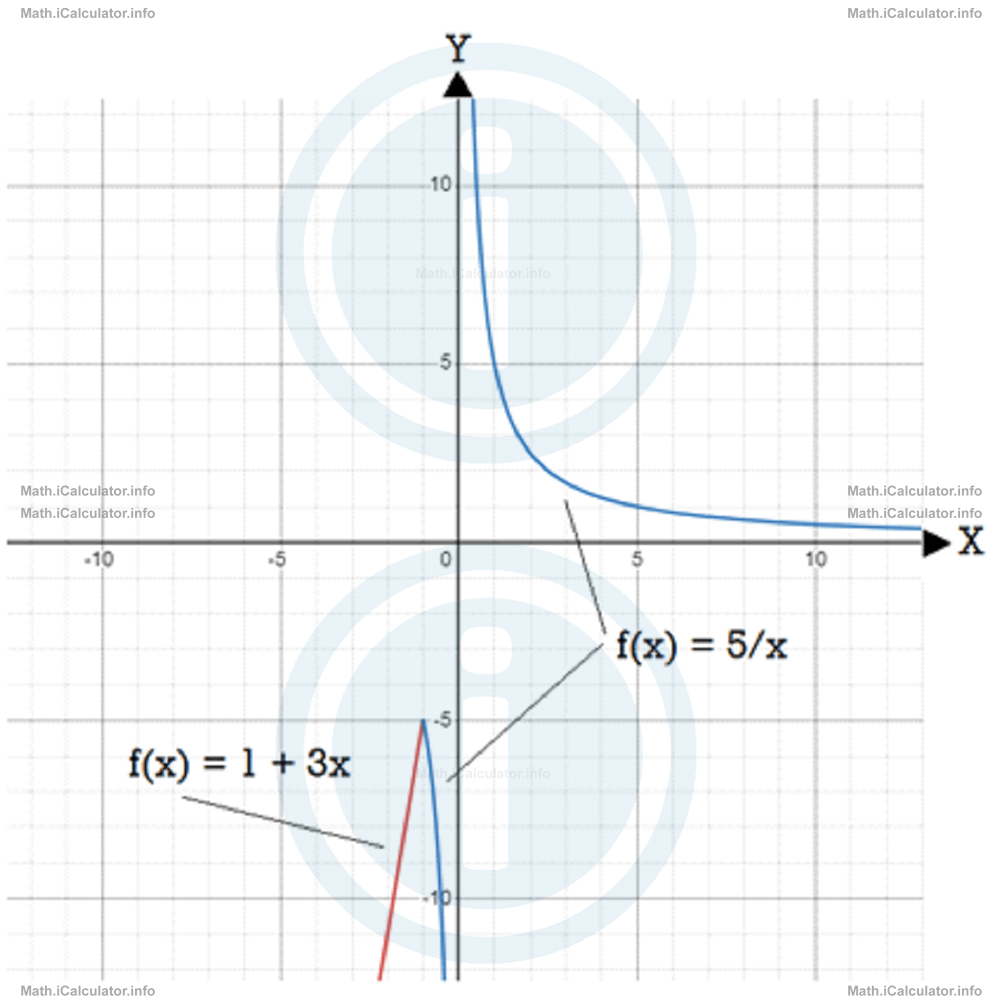Menu
Math Lesson 16.5.2 - Domain and Range of Piecewise Defined Functions
Please provide a rating, it takes seconds and helps us to keep this resource free for all to use
Welcome to our Math lesson on Domain and Range of Piecewise Defined Functions, this is the second lesson of our suite of math lessons covering the topic of Piecewise Functions, you can find links to the other lessons within this tutorial and access additional Math learning resources below this lesson.
Domain and Range of Piecewise Defined Functions
The domain of a piecewise function is obtained by taking the total of all intervals or segments that represent the individual domain of each function's piece. For example, in the above exercise, the domain is the entire set of real numbers because the first part of the function is defined in the negative part of the set of real numbers including zero while the second part of the function is defined in the positive part of real numbers.
As for the range, first, we identify the ranges of each part of the function. These ranges are eventually combined to form the overall range. Thus, in the function discussed in example 1
the range of the top part of the function consists of all positive numbers including zero. On the other hand, the range of the bottom part includes all numbers smaller than -1, because since 0 is the highest value of the domain (not exactly 0 actually but negative numbers close to it), then we have 2 · 0 - 1 = -1 as a maximum value of this part of the function. Hence, we have
and
Therefore, the overall range of this piecewise function is
Example 2
Look at the piecewise function below.
Find:
- The domain of f(x)
- The range of f(x)
Solution 2
- Since the division by 0 is not allowed, this value (x = 0) is not included in the domain of this function, despite it belonging to the first part of the function. Therefore, the domain is the whole set of real numbers without zero, i.e. D = (-∞, 0) ⋃ (0, + ∞).
- As for the range, we have to look at the limit values of each function piece. Thus, since the maximum value of the domain in the top part of the function is 1, the maximum value of the range for this part is f(x)max = 1 + 6 ∙ (-1)This value is not included in the range given that the value x = 1 does not belong to the domain of the top part of this piecewise function. It is just an upper limit for the range. In other words, we have f(x) < -5 for this part of the function. We write it as
= 1 - 6
= -5-∞ ≤ f(x) ≤ -5The bottom part of f(x) has x = -1 as a minimum value of the domain. It helps us find the minimum value of the range given that the variable is in the denominator (when the denominator of a fraction decreases, the value of that fraction increases). Hence, for -1 ≤ x < 0 we have-∞ ≤ f(x) ≤ -5and for x > 0, we have0 < f(x) < + ∞Therefore, the range of this function isR = (-∞,-5)∪(0, + ∞)Look at the graph of this function. You can easily see that for x = 0 this function is undefined. Another thing you can observe from the above figure is that there are two different lines (one straight line and one hyperbola that are combined to give the graph of this function. They are connected with each other at the point x = -1, a point which separates the two parts of this function.
You can easily see that for x = 0 this function is undefined. Another thing you can observe from the above figure is that there are two different lines (one straight line and one hyperbola that are combined to give the graph of this function. They are connected with each other at the point x = -1, a point which separates the two parts of this function.
You have reached the end of Math lesson 16.5.2 Domain and Range of Piecewise Defined Functions. There are 6 lessons in this physics tutorial covering Piecewise Functions, you can access all the lessons from this tutorial below.
More Piecewise Functions Lessons and Learning Resources
Whats next?
Enjoy the "Domain and Range of Piecewise Defined Functions" math lesson? People who liked the "Piecewise Functions lesson found the following resources useful:
- Domain And Range Feedback. Helps other - Leave a rating for this domain and range (see below)
- Functions Math tutorial: Piecewise Functions. Read the Piecewise Functions math tutorial and build your math knowledge of Functions
- Functions Revision Notes: Piecewise Functions. Print the notes so you can revise the key points covered in the math tutorial for Piecewise Functions
- Functions Practice Questions: Piecewise Functions. Test and improve your knowledge of Piecewise Functions with example questins and answers
- Check your calculations for Functions questions with our excellent Functions calculators which contain full equations and calculations clearly displayed line by line. See the Functions Calculators by iCalculator™ below.
- Continuing learning functions - read our next math tutorial: Inverse Functions
Help others Learning Math just like you
Please provide a rating, it takes seconds and helps us to keep this resource free for all to use
We hope you found this Math tutorial "Piecewise Functions" useful. If you did it would be great if you could spare the time to rate this math tutorial (simply click on the number of stars that match your assessment of this math learning aide) and/or share on social media, this helps us identify popular tutorials and calculators and expand our free learning resources to support our users around the world have free access to expand their knowledge of math and other disciplines.